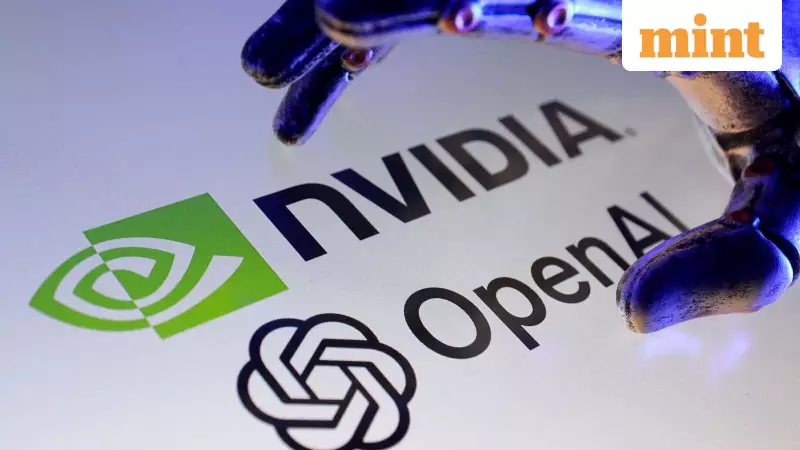
The AI Gold Rush: Building Castles on Speculative Sand
The artificial intelligence sector is witnessing unprecedented financial commitments that bear striking resemblance to historical speculative bubbles, with OpenAI at the epicenter of what experts fear could be a modern-day dot-com crash in the making. According to financial analyst Siddharth Pai, the AI revolution faces a critical disconnect between massive infrastructure spending and actual revenue generation.
Circular Deals: The Self-Reinforcing Financial Loop
Recent transactions reveal a troubling pattern of circular revenue arrangements within the AI ecosystem. The most prominent example involves OpenAI's relationship with Nvidia, where the AI giant spends enormous sums on Nvidia's specialized chips while Nvidia simultaneously invests capital into OpenAI and benefits from its valuation growth. This creates a closed financial loop where money circulates between supplier and customer without necessarily reflecting genuine market demand.
The phenomenon extends beyond chip manufacturers. In early November 2025, OpenAI signed a staggering $38 billion agreement with Amazon Web Services, committing to run substantial workloads on AWS infrastructure over the next seven years. While appearing as a standard cloud services contract, this arrangement exemplifies the blurred lines between investment, infrastructure, and demand forecasting that characterize today's AI landscape.
Staggering Financial Commitments
The scale of OpenAI's infrastructure spending is virtually unprecedented in technology history. Analysis by Tom Tunguz estimates that between 2025 and 2035, OpenAI has committed over $1.15 trillion across chip supply agreements, cloud compute contracts, and data center build-outs. These aren't speculative projections but legally binding obligations tied to hardware delivery, minimum usage levels, and exclusive access terms.
To justify this astronomical spending, OpenAI would need to achieve $577 billion in revenue by 2029—a monumental leap from its 2024 revenue of approximately $10 billion. The company's current revenue streams, including ChatGPT subscriptions, enterprise APIs, and licensing deals, show growth but nowhere near the exponential pace required to support such infrastructure investments.
The Infrastructure Expansion Machine
OpenAI's global expansion strategy further illustrates the speculative nature of current AI investments. The company has embarked on sovereign partnerships to build national AI infrastructure, advising governments on AI strategy while helping design and fund data center capacity that will ultimately run OpenAI's own models. This approach effectively positions OpenAI as the default AI provider within each jurisdiction while governments endorse the partnerships.
Data center development follows a similar pattern, with OpenAI committing hundreds of billions toward new projects in partnership with Oracle, SoftBank, and specialized infrastructure builders. These purpose-built AI facilities will reportedly require over 10 gigawatts of capacity—equivalent to the energy needs of small countries. In many cases, vendors remain owners or long-term lessors of the capacity, effectively renting the future back to OpenAI.
Historical Parallels and Warning Signs
The current AI investment climate shares disturbing similarities with past speculative cycles. The dot-com era witnessed massive bandwidth and server deployments based on presumptions about internet demand growth that never fully materialized. Similarly, the 19th-century railroad boom and early 20th-century electrification craze followed patterns of over-investment in infrastructure ahead of proven market demand.
Today's AI sector demonstrates textbook speculative investment characteristics: massive capital allocations based on projected dominance rather than proven economics. The circular revenue relationships between OpenAI and its vendors amplify this risk, creating a self-reinforcing loop where demand projections justify infrastructure investment, which in turn justifies more capital raising, inflating valuations that then support further infrastructure spending.
Training costs for frontier AI models continue escalating, energy requirements are surging, and regulatory pressure is mounting—all while revenue from AI applications struggles to keep pace with infrastructure commitments. As history has repeatedly demonstrated, speculative cycles rarely end gracefully; they typically collapse at the precipice when reality fails to match projections.
The AI revolution may indeed represent a genuine technological transformation, but its current business model remains speculative by design. The coming years will reveal whether today's massive investments will yield corresponding returns or whether the AI bubble will follow the painful but familiar pattern of previous technological hypes.





